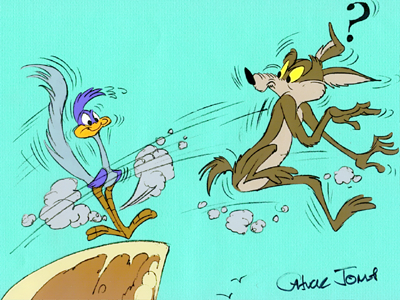

Consolarium blog
 Stop-motion animation used to be something that seemed unattainable to me. I remember many years ago watching movies that my uncle had made that had a number of toy cars and trains moving in a orchestrated fashion. Although I now know that he had been using the technique of stop-motion animation at the time I was in awe of the fact that there were no hands helping to move these toys and props… this was a strange magic! I didn’t realise that this was the same technique that was being used in many children’s TV programmes such as Bagpuss, Trumpton and movies such as King Kong (1933). A few years later stop-motion animation came very much to the fore in my generation’s TV viewing experience when Morph made his appearance on Take Hart. It was amazing to see such entertainment and life come to our screens from a simple ball of plasticene.
Stop-motion animation used to be something that seemed unattainable to me. I remember many years ago watching movies that my uncle had made that had a number of toy cars and trains moving in a orchestrated fashion. Although I now know that he had been using the technique of stop-motion animation at the time I was in awe of the fact that there were no hands helping to move these toys and props… this was a strange magic! I didn’t realise that this was the same technique that was being used in many children’s TV programmes such as Bagpuss, Trumpton and movies such as King Kong (1933). A few years later stop-motion animation came very much to the fore in my generation’s TV viewing experience when Morph made his appearance on Take Hart. It was amazing to see such entertainment and life come to our screens from a simple ball of plasticene.
When I was ‘Doon in the Wee Room’ recently in Tarves PS I saw this very same entertainment, life AND learning in evidence as some P.2/3 children were making their own stop-motion animation using a basic set that they had made, stop-motion animation software, a digital camera and some plasticene. In my discussion with the class teacher I had learned that this activity had arisen as a result of a discussion with the children about 3D shape. One child had made a sphere out of plasticene but had then cut out a mouth and made the sphere talk. This led to an idea to create an animation all about 3D shape and then their subsequent attempts to bring it to life…
In relation to Curriculum for Excellence it is clear that Technologies TCH 1-04b is being addressed here but the main focus of this learning activity is embedded in Mathematics, namely a focus on 3D Shape MTH1-16a. We can also see from the video how the children are working effectively together to make this project work. Even more importantly in my view is that from this early stage in this classroom these children are being given the framework of opportunities to engage with contexts for learning where they can use digital technologies to create and not just consume. How can such positive attitudes, embedded in their perceptions of themselves as learners, at this stage of their development influence and inform these children’s expectations of themselves, their developing skill-sets and ways in which they can apply these across the range of learning experiences that they will encounter? This can only be good for learners.
The challenge for us all in education is to ensure that we continue to offer such challenging and rich learning environments and experiences where our children can show us just what they can do.
More How long does it take to fall one thousand feet? Ok, 7.9 seconds is the answer. How long would it then take to fall 2000ft then 4000ft then 8000ft. As I thought through these answers I couldn’t help think of the old cartoon with Wiley Coyoye and the Roadrunner and the Acme contraptions that often lead to precipitous falls. However, moving away from the trivial to the extraordinary let me share Wolfram Alpha with you.
How long does it take to fall one thousand feet? Ok, 7.9 seconds is the answer. How long would it then take to fall 2000ft then 4000ft then 8000ft. As I thought through these answers I couldn’t help think of the old cartoon with Wiley Coyoye and the Roadrunner and the Acme contraptions that often lead to precipitous falls. However, moving away from the trivial to the extraordinary let me share Wolfram Alpha with you.
Wolfram Alphas is a ‘computational knowledge engine’. Wolfram Alpha introduces a fundamentally new way to get knowledge and answers—not by searching the web, but by doing dynamic computations based on a vast collection of built-in data, algorithms, and methods.
I was tremendously impressed with this resource and incredibly motivated to learn from it. The example I quoted at the beginning of this post came to my mind when I was searching through the examples that are available on the site. I saw the question ‘Compute how long to fall 1000ft.’ Once I saw this and then looked at the formula I had flashbacks to my youth in school with Higher Maths and how much I really did enjoy using maths that had a practical application and that was applied to contexts that had meaning. These opportunities back then were few and far between I may add.
Here are some other examples from the site that had me totally absorbed:
This resource has great potential. There are clear cross-0vers in to a variety of areas of interest and the ways in which this can be used to help address numeracy across learning for CfE and how it can have particular applied use in Maths, Physics and Chemistry is there to be explored. If you are a school in Scotland that intends to tap in to this excellent resource then please do let us know so that we can document just how this can help learners learn.
More
Find us on